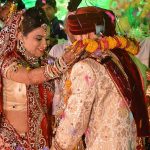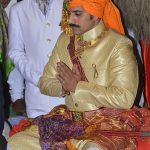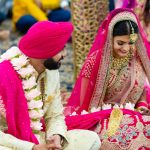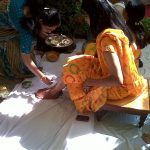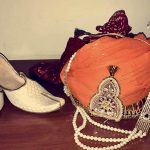A Baniya wedding is a wonderful celebration with much pomp. The Baniya community includes different clans such as the Kapol, Nagori, Agarwal, Dasora, Modh, Nagar and Disawal. While most of these clans were known for being in the moneylending profession in modern times, they are involved in many professions but still follow the Baniya wedding rituals. Read on to know more about the pre wedding, post wedding and Baniya wedding traditions.
Match Making
A Baniya match is finalized by the families of the bride and the groom usually through the Vaishya Samaj. Most often the Bichaulan or matchmaker is the person who makes the match based on the matching of the horoscopes of the bride and the groom. The families of the prospective bride or groom meet and discuss the match. If the match is agreeable to both families, the families proceed with the Baniya wedding rituals.
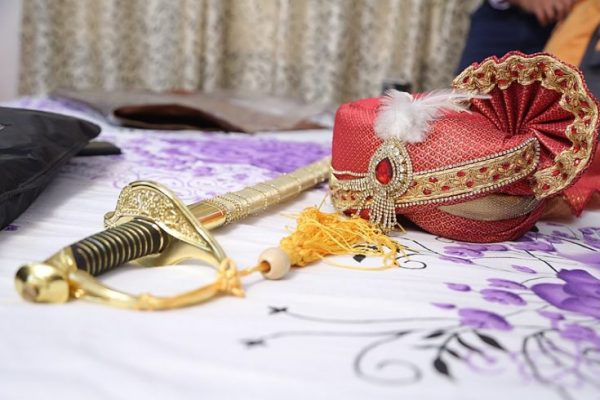
Rishta Pakka Karna
The families of the bride and groom meet usually in a temple or a hall. They exchange gifts, dry fruits and sweets. The groom’s family gives the girl’s family gifts that are auspicious such as Kumkum, Mehendi etc. The bride’s family applies a Tika to the groom’s forehead and a gift of cash. In some families, an exchange of rings marks the engagement of the boy and the girl. The pandit suggests a choice of auspicious dates and times for the wedding. The families choose the date that is the most suitable for them.
Bhaat Nyotna
The Bhaat Nyotna is a Baniya wedding ritual where the bride’s family invites the maternal uncle of the bride. The uncle then arrives closer to the wedding date laden with gifts of clothes, jewels, cash and fruits. The groom’s family invites the maternal uncle of the groom and he also similarly makes gifts to the groom.
Lagan Sagai
The menfolk of the bride’s family visit the groom’s house with gifts of suits, shirts, jewels and other gifts. If a ring was not exchanged during the engagement, a ring is also gifted to the groom. The groom is formally invited to arrive with his family and friends in a wedding procession or Baraat and marry the bride.
Haldi Ceremony
A Haldi ceremony is a popular custom in most Indian weddings. The family of the bride dip a bundle of grass in an auspicious mixture of Haldi, curd and oil and touch it to the head, shoulder, knees and then the feet of the bride. A Haldi paste is then smeared on the bride. A similar ritual happens at the groom’s house.
Kangana Bandhna
The Kangana Bandhana Baniya wedding ritual happens separately at the homes of the bride and the groom. A pandit presides over the ritual and chants mantras. Seven married women tie threads with seven knots on the writs of the bride and the groom. These threads or Kanganas are worn until the Baniya marriage rituals list is over and the couple reaches the groom’s home after the marriage. It is after the bride reaches the marital home that she removes the Kangana threads and wears green bangles that she usually wears for life as a sign of being a married woman.
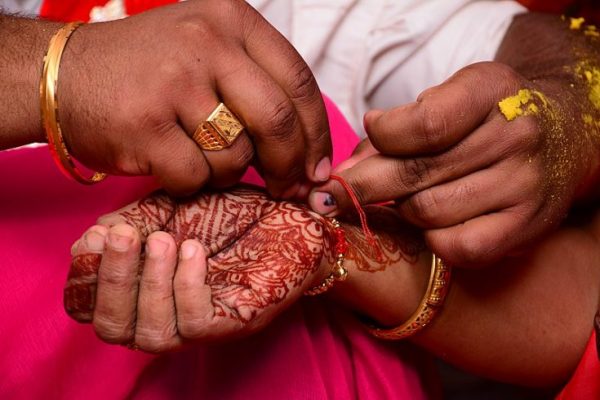
Mehendi Ceremony
A Mehendi ceremony is held individually at the groom’s house and the bride’s house. The groom’s family sends Mehendi to the bride’s house. This is mixed with more and Mehendi is applied to the hands and feet of the bride. All the women of the family usually apply Mehendi designs to their hands. The groom’s family uses the Mehendi that the bride’s family gifted them on the Sagai and applies designs to the palm of the groom’s hands. The women of the family also apply Mehendi designs to their hands.
Sangeet
The Baniya wedding traditions involve a Sangeet function at the homes of the bride and the groom where women gather and sing songs that invoke the gods and goddesses to bless the nation. They also sing folk songs or Banni to the bride and the groom’s family sing songs called Banna to the groom. However, in modern times, the Sangeet can be a joint function that may be celebrated with both the men and the women of the families in a public hall with elaborate rehearsed dances and the services of a DJ.
Bhaat
As mentioned before, on the wedding morning or the eve of the wedding, the maternal uncles of the bride and the groom visit the homes of the bride and the groom respectively and give them clothes and jewelry. There may also be cash gifted to help with the wedding expenses.
Ghudchadi and Baraat
The groom’s family and a priest pray at the groom’s house. The groom wears a sword and a Sehera and his mother applies a Tika on his head. He then mounts a horse and makes his way to the wedding venue. The procession is accompanied by a band and there is a festive atmosphere.
Swagat And Jaimala
The bride’s family welcomes the groom’s family. The bride enters with flowers or an umbrella held over her head and accompanied by her close friends. She also climbs onto the stage and the bride and the groom exchange garlands in a Jaimala ceremony. The guests shower flower petals on them.
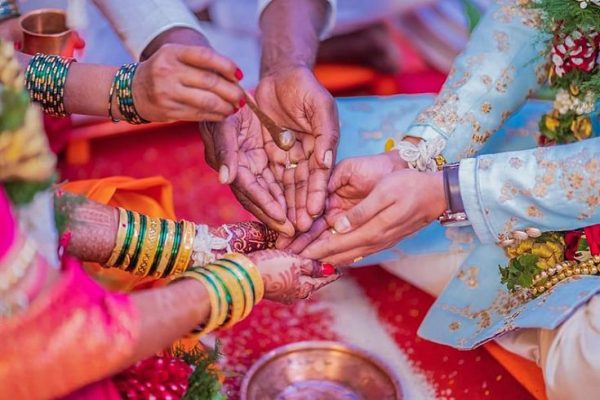
Kanyadaan
The bride and the groom enter the wedding Mandap at the designated auspicious time. The mother of the groom is not to be present at this Baniye wedding ritual. The bride’s father places the bride’s right hand on the groom’s right hand. The bride’s mother pours sacred water into the father’s hand and the water also flows over the joined hands of the bride and the groom. Some families place a coconut, betel leaf or rice in the bride’s hand and use milk instead of water. The Kanyadaan signifies that the bride’s father has handed her over to the groom/ The groom’s sister ties the dupatta of the bride with that of the groom.
Saat Pherey
The couple circumambulates a holy fire seven times and each circle signifies a vow read by the pandit. The groom then applies sindoor to the bride’s hair parting and ties a Mangalsutra around her neck. In some families, the groom’s family gifts jewelry to the bride.
Vidaai
The bride bids goodbye to her family and leaves, throwing plain rice and puffed rice over her head.
Marital Home
The groom’s mother welcomes the bride to her new home with an Aarti. The bride scatters a pot of rice on the threshold as she enters the new home with her right foot first.
Kangana Utaarna
The bride and groom play traditional wedding games. The Kangana on the bride’s and groom’s wrists are removed and it is a competition to see who removes them first.

Muh Dikhai
The married women in the family and the neighborhood meet the bride. The bride is to be seated with her face covered with a Ghungat and in return for seeing her face the women give her gifts. The women sing folk songs and dance.
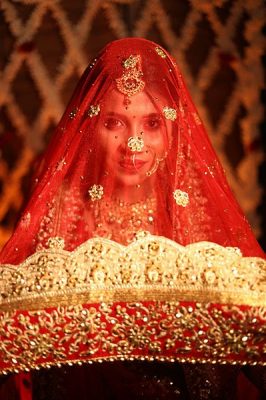
Wedding Reception
The near and dear of the couple are invited to a wedding reception and there is a feast. The guests give the newlywed couple gifts. The Baniya wedding rituals list comes to an end.




